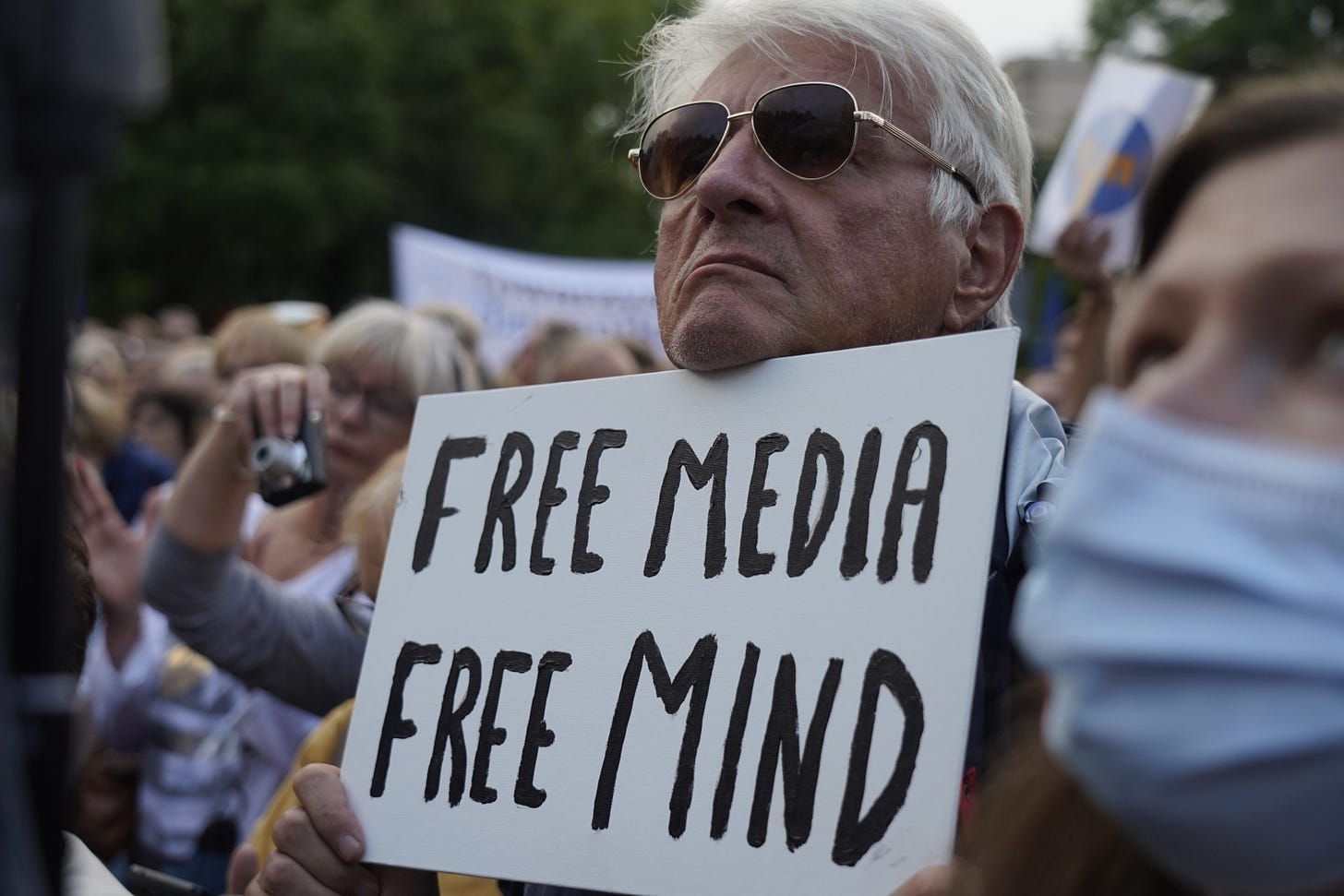The High-Water Mark of the New Nationalism in Central Europe?
The strength of Kaczyński in Poland and Orbán in Hungary—darlings of some American conservatives—may already have peaked.

The lower house of Poland’s parliament passed legislation earlier this month that would shut down the only remaining television news channel critical of the country’s nationalist government: TVN, owned by the U.S.-based Discovery Communications. The station’s Polish broadcast license expires in September, and the proposed law—backed by the ruling Law and Justice (PiS) party of Poland’s leader, Jarosław Kaczyński—would have the effect of preventing the station from renewing its license. The legislation is now pending in the Polish parliament’s upper house.
Even though TVN quickly moved to secure a backup option to stay on the air—by obtaining a Dutch broadcast license—international observers are right to be troubled by this brazenly authoritarian move. But this crackdown on free media, likely ineffective, is not a sign of the strength of Central European nationalism, admired by a growing number of American conservatives. Quite the contrary: It may signal that the era of Kaczyński, as well as Hungary’s Viktor Orbán, is past its high-water mark.
For PiS, the new law comes at a steep price. The vote splintered the party’s coalition by precipitating the departure of the small right-wing Agreement party from government. The proceedings also violated parliamentary norms by forcing legislators to retake a vote after a recess had been called, calling into question the legitimacy of the entire outcome. The law is also bound to further strain Warsaw’s critically important relationship with Washington, already under stress after the PiS embrace of Donald Trump in the run-up to the 2020 U.S. presidential election.
Why make such a risky and politically costly bet? One possibility is that PiS is increasingly desperate to stop the tide turning against the party. While in the 2019 election, the PiS-led coalition received about 44 percent of the popular vote, giving it a comfortable governing majority in the lower chamber, current polling appears much less promising, placing PiS in the 30 to 35 percent range.
With the government’s lackluster handling of the pandemic and with the center-right opposition reinvigorated by the return of the former European Council President Donald Tusk to the frontlines of Polish domestic politics, tightening the screws and making political competition (and media markets) dramatically unlevel may give PiS the edge it needs to gain a third term
But it’s also possible that the new anti-TVN legislation in Poland will become a rallying cry for the opposition, particularly if the Biden administration makes clear that Poland’s discriminatory treatment of U.S. companies is incompatible with a healthy U.S.-Polish relationship.
It is a real possibility that the next parliamentary election in Poland, scheduled for 2023, will be akin to the 1998 one in Slovakia, where the need to oust the increasingly authoritarian prime minister, Vladimír Mečiar, became a question of either anchoring the country in the West or letting it become the “black hole of Europe,” as then-U.S. Secretary of State Madeleine Albright described it. Interestingly, Mečiar also sought to shut down the country’s main independent TV channel, TV Markíza, prompting a mass popular mobilization against him in the weeks before the election.
Moreover, notwithstanding the current infatuation of the Trumpist right with Hungary’s nationalists, the odds of Viktor Orbán’s Fidesz party being re-elected in 2022 are not as high as you might think. If it stays on its current trajectory, the extraordinarily diverse coalition of political parties—from the far-right Jobbik, through the centrist-liberal Momentum, to center-left parties—stands a good chance of unseating Fidesz.
Indeed, the Hungarian government’s outreach to Western conservatives, as well as the government’s massive investment into nationalist intellectual and academic infrastructure (Mathias Corvinus Collegium) can be seen efforts to build a legacy that will outlast Orbán’s three terms in office and provide him with a fertile ground for a political comeback in the future.
The events that gave much of the fuel for the recent electoral performance of parties such as Fidesz and PiS are waning. The memory of the refugee crisis of 2015 and the wave of terror attacks in European capitals which surrounded it is becoming hazier by the day. There are also political points to be scored from opposing COVID-related restrictions, vaccines, or mask mandates. Yet those are not easily available to political parties whose task it is to govern in the pandemic. And mobilizing Central European electorates against American-style wokery and political correctness may sound attractive to U.S. conservatives but rings hollow in an environment where gender studies and critical race theory have little real-life significance.
Predictions are always treacherous. If the Taliban’s takeover of Afghanistan leads to a new refugee crisis in Europe, for instance, all bets are off. However, there are signs in Poland and Hungary, as well as in the rest of Europe, that the 2020s may be politically calmer and more prosperous than the decade that preceded them. Now is the time to start planning for the age after Fidesz and PiS and to ensure that the attempts at incumbent entrenchment, attacks on rule of law, and polarized zero-sum politics of the past decade do not return with a vengeance.




